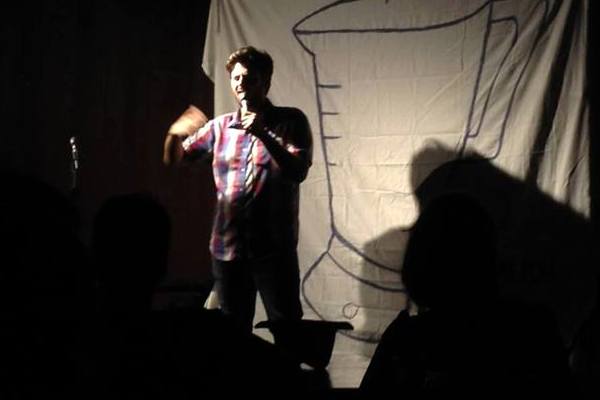 Imagine standing in front of a group of people, talking to them directly, and trying to make them laugh. While this would be a nightmare scenario for many of us, this is the life of a stand-up comic, played out night after night, in cities and towns across the country.
Imagine standing in front of a group of people, talking to them directly, and trying to make them laugh. While this would be a nightmare scenario for many of us, this is the life of a stand-up comic, played out night after night, in cities and towns across the country.
Using a folkloristic approach and leveraging the discipline’s central method of studying interpersonal, artistic communication and performance, Ian Brodie explores the world of stand-up comedy in his new book, A Vulgar Art. Because stand-up comedy is a rather broad category, people who study it often begin by relating it to something they recognize such as literature or theatre, and analyze it accordingly.
 An associate professor of folklore at Cape Breton University, Brodie begins with that fundamental observation above: stand-up comedy is someone standing in front of a group of people, talking to them directly, and trying to make them laugh. It takes the moment of performance as its focus and shows that stand-up comedy is a collaborative act between the comedian and the audience.
An associate professor of folklore at Cape Breton University, Brodie begins with that fundamental observation above: stand-up comedy is someone standing in front of a group of people, talking to them directly, and trying to make them laugh. It takes the moment of performance as its focus and shows that stand-up comedy is a collaborative act between the comedian and the audience.
Although the form of talk on the stage resembles talk among friends and intimates in social settings, stand-up comedy remains a profession. As such, it requires performance outside of the comedian’s own community to gain larger and larger audiences. How do comedians re-create that atmosphere of intimacy in a roomful of strangers? This book regards everything from microphones to clothing and LPs to twitter as strategies for bridging the spatial, temporal, and sociocultural distances between the performer and the audience.
The Office of Research and Graduate Studies at CBU is hosting a celebration of the launch of A Vulgar Art Wednesday, November 26, 4-6pm at the CBU Art Gallery. Light refreshments will be served.

